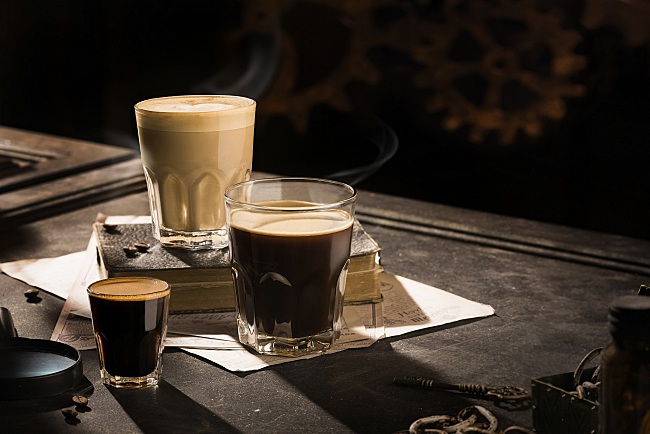A Beginner’s Guide to Understanding SOE Single Origin Espresso
A Beginner’s Guide to Understanding SOE Single Origin Espresso
Blog Article
Comprehending Coffee Beans: the Journey From Espresso to Blended Coffee Beans

The Origins of Coffee: A Worldwide Perspective
While you may think of coffee as a modern staple, its beginnings trace back centuries, linking with societies across the globe. The story starts in Ethiopia, where tale states a goat herder called Kaldi discovered the energizing results of coffee beans after seeing his goats romping vigorously after eating them.
As profession courses expanded, coffee made its method to Europe in the 17th century, rapidly obtaining appeal. Each society included its one-of-a-kind spin to coffee preparation, enriching its history.
Cultivation and Harvesting of Coffee Beans
As coffee's trip progressed, the focus shifted to the growing and harvesting of certain bean selections, specifically those made use of for coffee. You'll find that coffee beans commonly come from Arabica or Robusta plants, each offering distinctive tastes. The optimal expanding conditions include high altitudes and abundant, well-drained dirt, which boost the beans' quality.
During the harvest, choosing methods differ. Timing is essential; you desire to collect when the cherries reach peak perfection for optimum taste.
As soon as harvested, the beans are prepared for processing, which is crucial in determining their final taste. Recognizing the cultivation and harvesting procedures gives you insight into what goes right into your favored coffee, enhancing your gratitude for each and every mug.
Processing Techniques: From Cherry to Bean
Since you have actually discovered gathering coffee beans, allow's discover just how those cherries transform into the coffee beans you enjoy. You'll see exactly how various harvesting strategies impact taste, adhered to by the necessary steps of fermentation and drying out. We'll break down the milling and grading procedure that determines your coffee's high quality.
Harvesting Strategies Discussed
When it pertains to coffee, comprehending harvesting methods is important, since they straight influence the taste and top quality of the beans you enjoy. There are two primary methods: selective selecting and strip picking. Careful choosing includes hand-picking just ripe cherries, guaranteeing you get the best top quality beans. This method usually results in a richer taste account, though it's more labor-intensive. On the various other hand, strip selecting methods gathering all cherries simultaneously, despite perfection. While it's quicker and less costly, this can lead to a mix of tastes, impacting the end product. Eventually, the option of gathering method can substantially influence your coffee experience, so it deserves knowing exactly how those beans made it to your mug.
Fermentation and Drying Out
After harvesting, the next steps in handling coffee beans play a substantial duty fit their flavor. You'll find that fermentation is important, as it assists break down the mucilage surrounding the beans, enhancing their preference account. Depending upon the method, this procedure can last from a couple of hours to a number of days, with varying outcomes based upon temperature and humidity.
As soon as fermentation is total, drying follows, which is just as crucial. You can select from mechanical or sun-drying drying approaches. Sun-drying enables the beans to absorb tastes from the atmosphere, while mechanical drying warranties constant moisture degrees despite weather. Correct drying is vital to prevent mold and mildew and preserve the beans' top quality, eventually influencing your mug of coffee.
Milling and Grading Refine
As fermentation and drying set the stage for taste growth, the milling and grading procedure warranties that just the best coffee beans make it to your cup. This stage involves eliminating the outer layers of the coffee cherry, including the parchment and husk. Top notch beans obtain a greater quality, resulting in a richer coffee experience.
Roasting Techniques: Unlocking Flavor Prospective
When you roast coffee beans, the technique you pick can considerably influence the taste account. Understanding the relationship between time, temperature, and roasting techniques is essential to exposing the capacity of your brew. Let's explore exactly how these aspects integrated to produce the ideal cup.
Roasting Methods Explained
While you might assume that all coffee roasting approaches produce the very same results, the fact is that each method discloses special flavor possibilities in the beans. Drum roasting makes use of a rotating drum to equally distribute warm, enhancing caramelization and generating a balanced flavor. Air roasting, on the various other hand, circulates warm air around the beans, promoting a lighter roast right here with noticable level of acidity.

Influence On Taste Profile
Various roasting techniques not just influence the process but likewise significantly influence the taste profile of the coffee beans. When you select a light roast, you'll experience intense acidity and flower notes, showcasing the bean's beginning. On the other hand, a medium roast equilibriums level of acidity with sweetness, commonly revealing chocolatey undertones. Dark roasts, on the various other hand, highlight bold, smoky tastes, occasionally masking the bean's distinct features. Each technique reveals different oils and substances, bring about a variety of tastes. By trying out with various roasting styles, you can find which accounts reverberate with your palate. Understanding these nuances assists you value the virtuosity behind your mug of coffee, boosting your total experience with every sip.
Time and Temperature Factors
To launch the complete taste possibility of coffee beans, both time and temperature level throughout the toasting process play considerable roles. When roasting, you'll find that higher temperature levels can quickly develop tastes, yet if you rush it, you might wind up with charred notes. On the other hand, reduced temperature levels permit an extra gradual flavor growth, showcasing the beans' one-of-a-kind features.

Timing is simply as crucial; prolonging the roast too long can bring about a loss of level of acidity and brightness, while too short a roast might leave the beans underdeveloped. Locating that pleasant area requires practice and experimentation. By readjusting these elements, you can reveal the abundant, complicated flavors concealed within each bean, producing a really remarkable coffee experience.
The Art of Mixing: Crafting Distinct Coffee Accounts

Begin by picking a base coffee that offers a strong structure. Choose complementary beans to boost details flavor notes. An intense Ethiopian bean can bring fruitiness, while an abundant Brazilian coffee adds body. Experimentation is essential-- don't hesitate to readjust proportions till you find your optimal profile.
As you blend, remember that each combination tells a story. You're not just making coffee; you're producing an experience. So, take your time, preference regularly, and appreciate the trip of uncovering your trademark mix.
Brewing Techniques: Exactly How Preparation Impacts Flavor
Mixing coffee opens up a domain of taste possibilities, however how you brew that mix can significantly affect your last cup. On the other hand, a pour-over highlights the coffee's quality and illumination, excellent for showcasing fragile notes.
Coffee, with its high stress, generates a concentrated shot that accentuates sweetness and crema. If you choose a lighter mixture, consider a cold brew technique; it produces a smooth, much less acidic preference.
Inevitably, trial and error is key. Readjusting variables like water temperature level, grind size, and brew time can change your coffee's profile. Embrace the art of developing to find the flavors hidden in your coffee blends. The right approach can elevate your experience to new elevations.
The Future of Coffee: Sustainability and Innovation
As the coffee market evolves, sustainability and technology are coming to be necessary for attending to environmental obstacles and meeting consumer demands. You'll notice that even look at here now more coffee firms are adopting green techniques, from sourcing beans fairly to applying sustainable farming strategies. These changes not only assist the world yet additionally boost the quality of the coffee you appreciate.
You may see advancements like biodegradable product packaging and water-saving brewing methods that minimize waste. Advanced modern technology, such as blockchain, is additionally ending up being prominent, guaranteeing transparency in the supply chain, which enables you to trace try these out your coffee back to its origins.
On top of that, investing in local neighborhoods and supporting farmers via reasonable profession initiatives cultivates a more sustainable coffee ecosystem. As you drink your next cup, bear in mind that your options can add to a brighter future for coffee. By choosing sustainable brands, you're not simply enjoying a drink; you're making a favorable influence on the globe.
Regularly Asked Questions
What Is the Distinction Between Arabica and Robusta Beans?
Arabica beans are smoother, sweeter, and have a greater level of acidity, while robusta beans are more powerful, much more bitter, and contain even more caffeine. When making your coffee., you'll observe these distinctions in flavor and fragrance.
Just How Does Elevation Affect Coffee Bean Taste?
Altitude impacts coffee bean flavor substantially. Higher altitudes generate beans with brighter acidity and complicated tastes, while lower elevations typically generate beans that are heavier and much less nuanced. You'll observe these differences in your mug!
What Are the Health Benefits of Drinking Coffee?
Consuming alcohol coffee can improve your power, enhance psychological focus, and even boost physical performance. It's abundant in antioxidants, might decrease the danger of certain diseases, and can promote a healthier metabolic rate when consumed in moderation.
Can Coffee Beans Be Reused for Brewing?
Yes, you can reuse coffee beans for brewing, yet the flavor could be weaker. If you delight in experimenting, try recycling them in various methods, like cold brews or including in smoothies for an extra kick.
How Should I Store Coffee Beans for Quality?
To keep your coffee beans fresh, keep them in an airtight container in an amazing, dark place. Stay clear of revealing them to warm, light, or dampness, as these elements can quickly weaken their taste and aroma.
Understanding Coffee Beans: the Journey From Espresso to Blended Coffee Beans.
Now that you've discovered about gathering coffee beans, allow's check out how those cherries change into the coffee beans you like.When you roast coffee beans, the technique you select can significantly impact the flavor profile - Single Origin Espresso.While you may believe that all coffee roasting approaches generate the same results, the truth is that each strategy discloses distinct taste capacities in the beans.Various toasting approaches not just influence the process but likewise significantly influence the flavor account of the coffee beans
Report this page